Politics
New York City Officials Have Voted to Demolish the Art-Filled Elizabeth Street Garden
The city plans to replace it with affordable housing, sparking a conflict between two scarce resources.
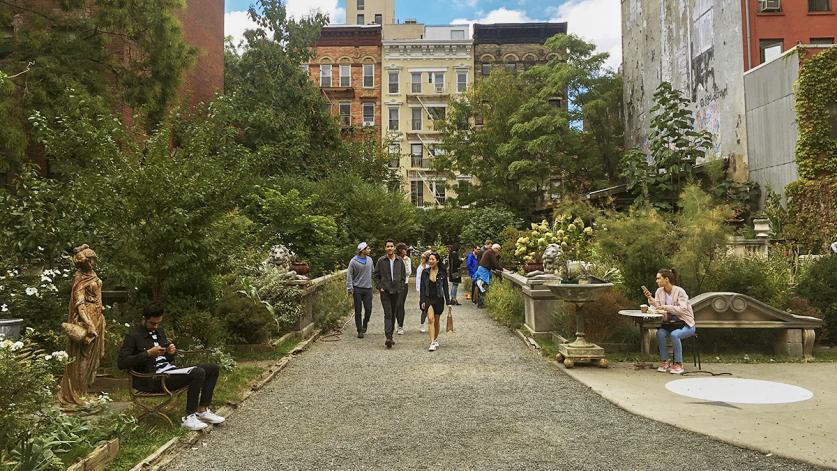
The city plans to replace it with affordable housing, sparking a conflict between two scarce resources.

Two of New York City’s scarcest resources—affordable housing and green space—are facing off. And at least in this case, the former is winning.
Yesterday, New York’s City Planning Commission voted to approve a controversial proposal to build affordable senior housing on the site of Elizabeth Street Garden, an art-filled oasis tucked away in Manhattan’s dwindling Little Italy neighborhood.
There were 12 votes in favor of the housing project and one abstention. The proposal now moves to the City Council, where it is expected to be approved.
“In a neighborhood that has so few undeveloped parcels, every piece of land has the potential to meet multiple, and at times, competing neighborhood needs,” said city planning chair Marisa Lago as part of her “yes” vote, according to Patch. “In a neighborhood with an area median income as high as this one, the search for land on which to construct affordable housing is especially challenging.”
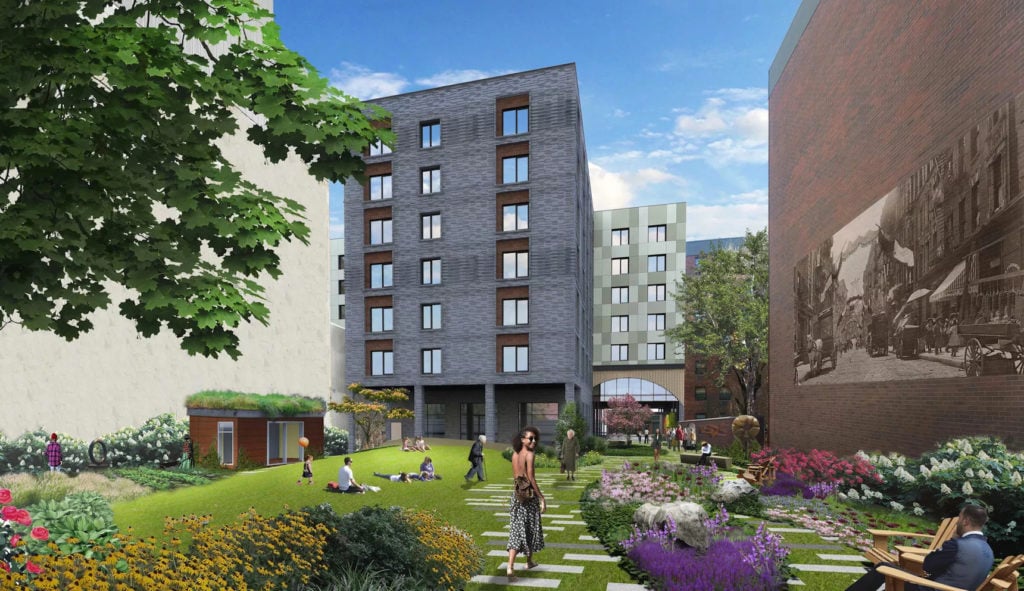
Rendering of Haven Green, affordable housing for seniors set to be built on the site of the Elizabeth Street Garden. Image courtesy of Curtis + Ginsberg Architects.
The project has divided the neighborhood: As a final attempt to preserve the garden, advocates have filed a lawsuit against the city and the Department Housing Development and Preservation.
They claim that the City Planning Committee broke the law by not calling for a full Environmental Impact Statement on the project and point out that the proposal invokes a state law offering tax incentives to developers who improve “slums or blighted areas,” which the garden is not. They have proposed 388 Hudson Street, a nearby city-owned gravel lot, as an alternate site for the affordable housing project.
“While the City Planning Commission’s vote to approve the destruction of the garden is unfortunate, we were expecting this,” the garden’s executive director, Joseph Reiver, told artnet News, noting that he is focusing most of his energies on the pending litigation against the development.
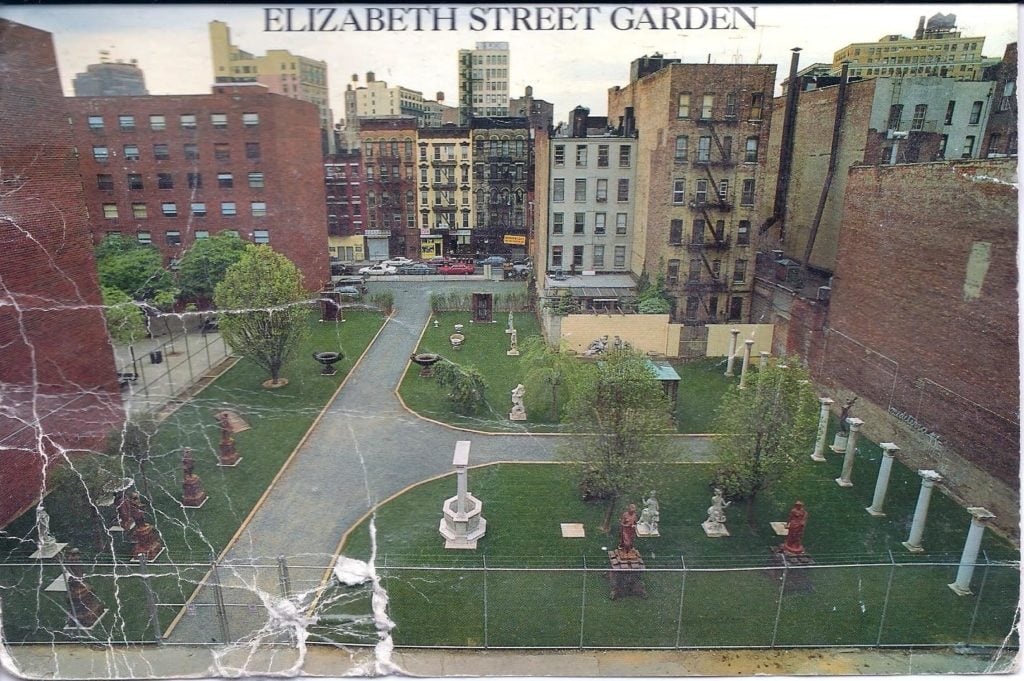
Elizabeth Street Garden in the early years. Photo courtesy of ESG.
A rare patch of undeveloped land in downtown Manhattan, the Elizabeth Street Garden was once the site of a public school, which was torn down in the 1970s. The lot lay vacant until 1991, when local gallery owner Allan Reiver leased the land from the city.
Over the years, Reiver transformed the land into a sculpture garden, planting trees and flowers and adding artwork including two marble sphinxes, decorative stone urns, and statuary salvaged from significant homes on the East Coast.
“The Elizabeth Street Garden is an Outsider Art garden—a landscape representing an individual artistic expression, conceived by a non-professional designer and executed in a creative style all its own,” wrote Charles A. Birnbaum, president and CEO of the Cultural Landscape Foundation, on the organization’s website.
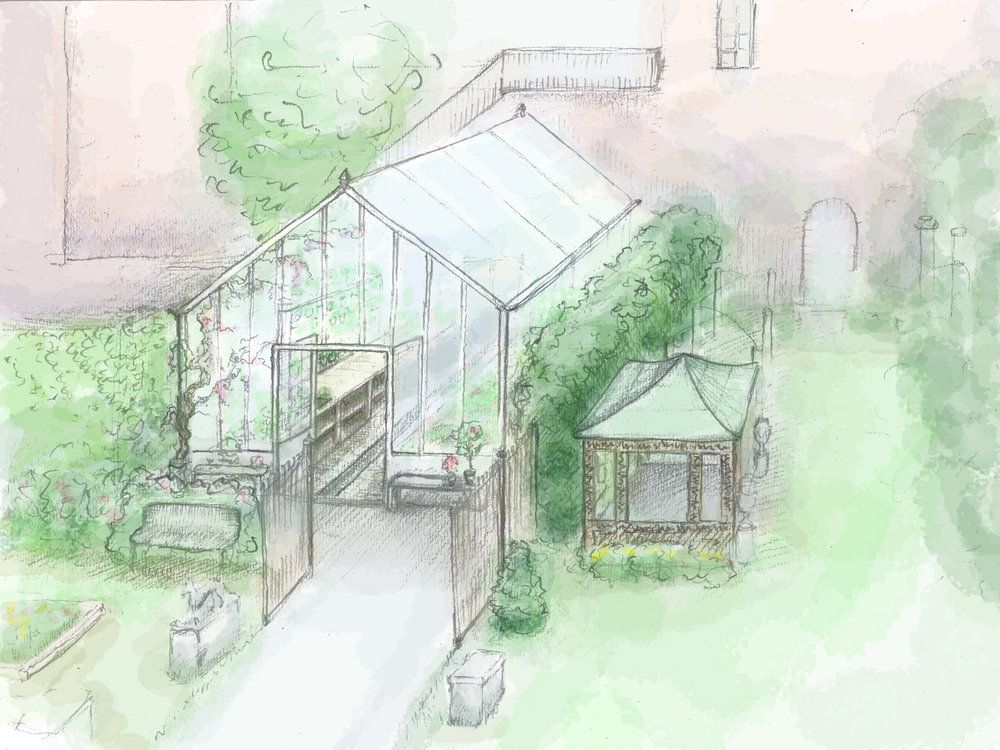
Sketch of Elizabeth Street Garden’s plans for a greenhouse. Image courtesy of Ella Barnes/ESG.
City Councilwoman Margaret Chin first targeted the garden a site for a housing development in 2012, during the approval process for the nearby Essex Crossing development. When community members learned of her plans, they rallied, founding the Friends of the Elizabeth Street Garden and expanding public access to the space. There are now some 100,000 annual visitors.
Chin contends that the garden was never truly public, and as such is not the cornerstone of community life that it presents itself as. Beginning in 2005, Reiver had a sign posted inviting the public to visit by entering through his gallery. He opened the front gate only after the Friends of the Elizabeth Garden volunteered to help run the space.
A petition to save the garden has amassed roughly 10,000 signatures, according to Joseph Reiver, who would have the land be transferred to the city’s Park Department.
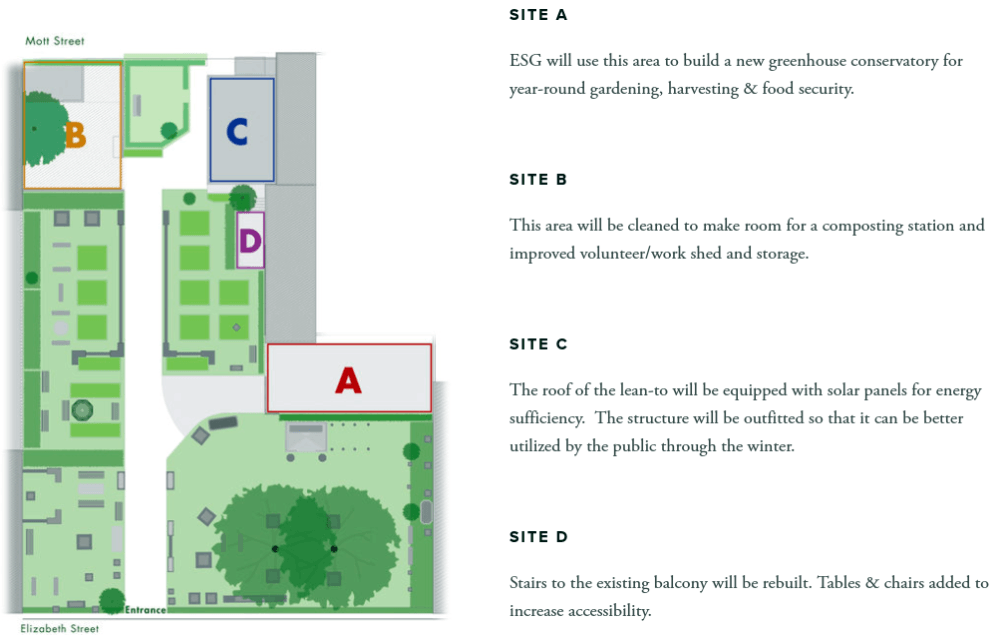
Elizabeth Street Garden’s plans for the future. Image courtesy of ESG.
Despite the outcry, the housing department issued a request for proposals for an affordable senior housing project on the site in 2016 and the project began to take shape. Should it gain approval, the existing 20,000-square-foot garden would be reduced to 6,700 square feet of green space. The seven-story Haven Green building would include 123 affordable, LGBTQ-friendly apartment units for seniors, half reserved for those who already live in the neighborhood, and 37 for the homeless.
The next step toward approval is a public hearing before City Council. Although the council is likely to side with Chin, “we still plan on showing up at the hearing to call for a truly democratic process,” Joseph Reiver said. He maintains that the alternative land parcel “avoids pitting community green space against affordable housing.”
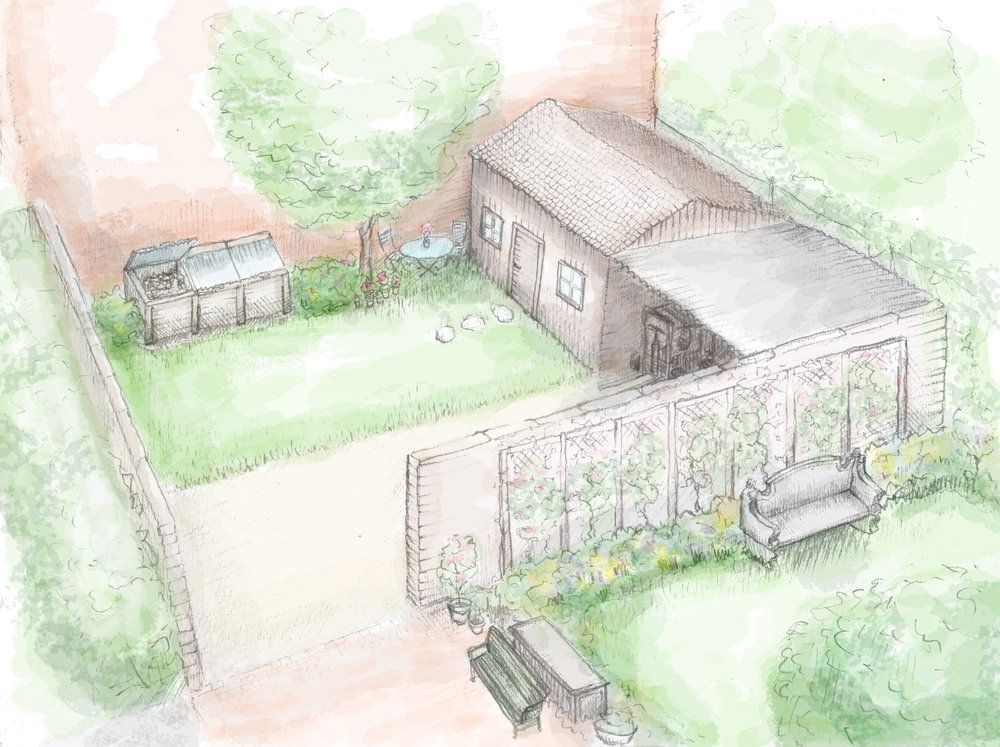
Sketch of Elizabeth Street Garden’s plans for a composting site. Image courtesy of Ella Barnes/ESG.
But Chin believes that in order to make an impact, both undeveloped lots should be put toward affordable housing.
“In my City Council district, there over 5,000 seniors on waiting lists for senior housing, and citywide there are over 200,000 waiting for senior housing,” Chin told Curbed. “When we look at [388 Hudson], that is not an alternative site; it’s an additional site. If we can build affordable housing on that site, we should build it, because there’s such a tremendous need.”